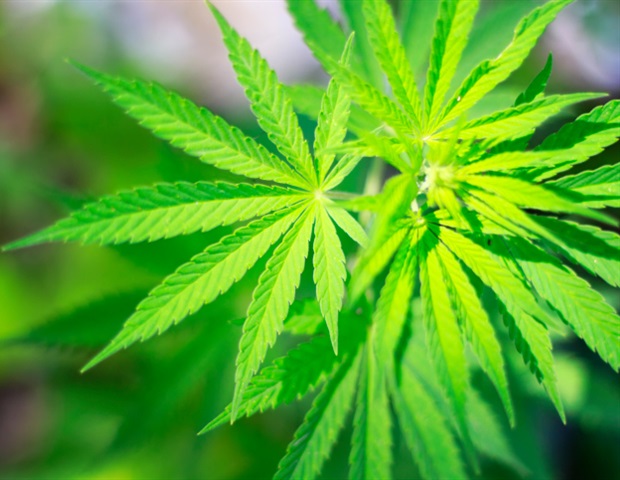Report on Youth Cannabis Use and its Implications for Sustainable Development Goal 3
Executive Summary
A United States study published in Tobacco Control reveals a significant pathway from adolescent and young adult cannabis use to regular tobacco consumption. This “reverse gateway” effect poses a considerable challenge to public health initiatives and the achievement of Sustainable Development Goal 3 (SDG 3), which aims to ensure healthy lives and promote well-being for all at all ages. The analysis indicates that 13% of new regular tobacco use among youth is attributable to prior cannabis use, undermining decades of progress in tobacco control.
Key Findings and Public Health Impact
The report is based on data from the Population Assessment of Tobacco and Health (PATH) study, tracking 13,851 individuals aged 12-24 from 2017 to 2021.
- Increased Risk: Youth who use cannabis are significantly more likely to become regular tobacco users, even if they have no prior history of tobacco experimentation.
- Age-Specific Data:
- Among teens (12–17 years), 32.7% of cannabis users progressed to regular tobacco use, an increase of 15.6 percentage points over non-users.
- Among young adults (18–24 years), 14% of cannabis users progressed to regular tobacco use, an increase of 5.4 percentage points over non-users.
- National Impact: Extrapolated across the U.S. population, an estimated 509,800 fewer young people would have become regular tobacco users in 2021 if they had not used cannabis in 2017.
Alignment with Sustainable Development Goal 3: Good Health and Well-being
The study’s findings have direct and critical implications for several targets within SDG 3.
- Target 3.4: Reduce mortality from non-communicable diseases (NCDs). The progression from cannabis to tobacco directly threatens progress on this target by increasing the future burden of tobacco-related NCDs, such as cancer, cardiovascular disease, and chronic respiratory conditions. Failure to address this pathway could reverse gains made in reducing premature mortality.
- Target 3.5: Strengthen the prevention and treatment of substance abuse. The research underscores the interconnected nature of substance use. It highlights the necessity for integrated prevention strategies that address both cannabis and tobacco, as called for in Target 3.5, rather than treating them as separate public health issues.
- Target 3.a: Strengthen the implementation of the WHO Framework Convention on Tobacco Control. Efforts to implement this framework may be significantly undermined if the role of cannabis as a precursor to regular tobacco use is not addressed. The study provides evidence that effective tobacco control requires a broader approach that includes cannabis prevention.
Methodological Overview
The conclusions are derived from a longitudinal observational study analyzing data from a regular survey of U.S. households. While robust, the study acknowledges certain limitations:
- The observational design cannot establish direct cause and effect.
- Data on substance use was self-reported.
- Potential confounding factors such as peer influences and socioeconomic status may not have been fully captured.
Recommendations for Policy and Public Health Strategy
In light of these findings and their implications for achieving global health targets, the following actions are recommended:
- Integrate Prevention Efforts: Tobacco control programs must incorporate cannabis prevention as a core strategic goal to effectively reduce the initiation of regular tobacco use among youth.
- Update Public Health Guidance: Major health agencies should formally recognize and address the potential for early cannabis use to increase future regular tobacco use, aligning public health messaging with current evidence.
- Strengthen SDG 3 Initiatives: To safeguard progress towards SDG 3, public health policies must address the cannabis-to-tobacco pathway to prevent a new generation of regular tobacco users and mitigate the future burden of NCDs.
1. Which SDGs are addressed or connected to the issues highlighted in the article?
-
SDG 3: Good Health and Well-being
The article directly addresses public health concerns, specifically focusing on substance use among adolescents and young adults. The core issue discussed—the link between cannabis use and subsequent regular tobacco use—falls squarely under the goal of ensuring healthy lives and promoting well-being for all at all ages. The study highlights a significant risk factor for addiction and associated health problems, which is a key area of concern for SDG 3.
2. What specific targets under those SDGs can be identified based on the article’s content?
-
Target 3.5: Strengthen the prevention and treatment of substance abuse, including narcotic drug abuse and harmful use of alcohol.
This target is directly relevant as the article investigates the use of cannabis and tobacco, both of which are psychoactive substances. The study’s conclusion emphasizes the need for prevention, stating that “cannabis prevention should be included as a key goal in tobacco control programs.” This highlights a specific strategy to strengthen the prevention of substance abuse among young people, as called for by Target 3.5.
-
Target 3.a: Strengthen the implementation of the World Health Organization Framework Convention on Tobacco Control in all countries, as appropriate.
The article’s findings have direct implications for tobacco control efforts. It warns that “failure to address cannabis use among young people has the potential to undermine the progress tobacco control efforts have made in reducing tobacco initiation and progression to regular use.” By identifying cannabis use as a “major risk factor for progression to regular tobacco use,” the article points to a new challenge that must be integrated into tobacco control strategies to effectively implement the WHO Framework Convention.
3. Are there any indicators mentioned or implied in the article that can be used to measure progress towards the identified targets?
-
Implied Indicator for Target 3.5: Prevalence of substance use among adolescents and young adults.
While the official indicator (3.5.1) focuses on treatment coverage, the article provides crucial data on the prevalence of substance use, which is essential for measuring the scope of the problem and the effectiveness of prevention efforts. The article explicitly states that among the respondents aged 12–24, “15.4% had admitted using cannabis in the last 12 months.” It also quantifies the progression to tobacco use, noting that “32.7% of US teens aged 12–17 years who had used cannabis had progressed to regular tobacco use four years later.” These statistics serve as direct measures of substance use patterns in a specific youth population.
-
Implied Indicator for Target 3.a: Prevalence of current tobacco use among persons aged 12-24.
The official indicator (3.a.1) measures the prevalence of tobacco use in those aged 15 and older. The article provides specific data for a younger demographic, which is critical for tracking initiation and progress in tobacco control. The study found that cannabis use led to an increase in regular tobacco use of “15.6 percentage points” for teens and “5.4 percentage points” for young adults compared to their non-cannabis-using peers. Furthermore, it estimates that “13% of total new regular tobacco use was estimated to be attributable to cannabis.” This data directly measures the prevalence and contributing factors of tobacco use, aligning with the goal of Indicator 3.a.1.
4. Create a table with three columns titled ‘SDGs, Targets and Indicators” to present the findings from analyzing the article.
| SDGs | Targets | Indicators |
|---|---|---|
| SDG 3: Good Health and Well-being | Target 3.5: Strengthen the prevention and treatment of substance abuse, including narcotic drug abuse and harmful use of alcohol. | Prevalence of substance use among adolescents and young adults. (Implied by data such as “15.4% had admitted using cannabis in the last 12 months” and the progression rates to tobacco use). |
| SDG 3: Good Health and Well-being | Target 3.a: Strengthen the implementation of the World Health Organization Framework Convention on Tobacco Control in all countries, as appropriate. | Prevalence of current tobacco use among persons aged 12-24. (Implied by the finding that “13% of total new regular tobacco use was estimated to be attributable to cannabis”). |
Source: news-medical.net







